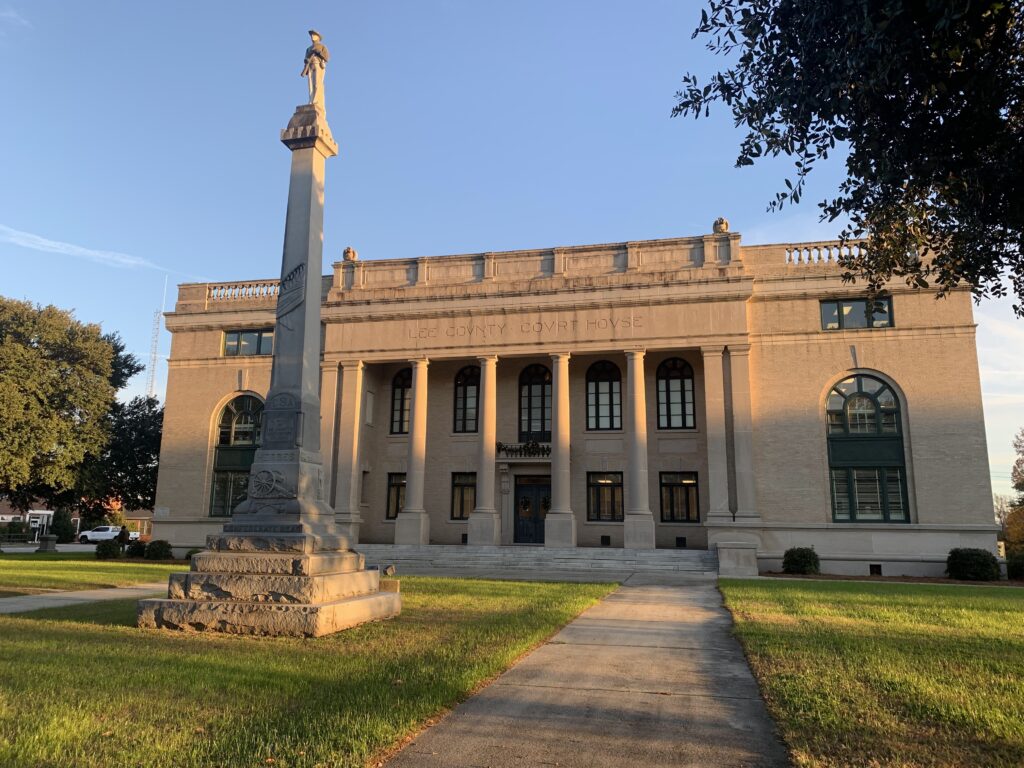The Lee County Courthouse on Dec. 5, 2023. (Skylar Laird/SC Daily Gazette)
BISHOPVILLE — A Lee County jury found an inmate guilty of murder for killing a rival gang member during a 2018 prison riot that left seven dead and more than 20 injured.
The jury deliberated for an hour Thursday before delivering its verdict.
Stephen Green, whose trial started Monday, was the only inmate prosecuted for murder in the April 2018 riot that left seven men dead and more than 20 injured. He is the second of 47 indicted inmates to go to trial six years after the riot that became one of the nation’s bloodiest.
Stephen Green (S.C. Department of Corrections)
The jury also found Green guilty of assault and battery by a mob, possessing a weapon and criminal conspiracy.
Green, 44, is already serving two life sentences for burglary convictions in 1999, concurrent with three, 30-year sentences for armed robbery, kidnapping and rape.
Judge Ferrell Cothran Jr. handed down two more life sentences for murder and assault and battery by a mob Thursday.
The state Department of Corrections and Attorney General’s Office have vowed to prosecute every inmate involved in the riot regardless of their current sentence.
“You never know what will happen with that first sentence,” prosecuting attorney Barney Giese, a former solicitor, said after the verdict. “This will keep him in forever.”
Most involved in the riot were charged with assault and battery by a mob.
But Green, who prosecutors said led the mob in one dorm, returned to a dying inmate alone to deliver a “killing blow,” which added the charge of murder, said attorneys for Attorney General Alan Wilson.
Of the 47 charged, 14 have pleaded guilty. Another two have died in custody, according to the Department of Corrections.
One, Michael Smith, was convicted and sentenced to 40 years for criminal conspiracy, assault and battery in a mob, and possession of a weapon. No trial dates have been set for the remaining 28.
What happened?
Bloodshed broke out around 7 p.m. on April 15, 2018, when a group of inmates killed and robbed Michael Milledge, a well-liked 44-year-old prisoner. A group of prisoners that were part of a rival retaliated, killing the inmate who stabbed Milledge to death.
Word spread to other dorms through inmates’ contraband cellphones, and gang violence erupted throughout the prison.
That included in the unit where Green and Cornelius McClary were living. Inmates gathered into their separate gangs — the Bloods, the Crips and the Gangster Disciples.
Prosecutors said Green led the mob of Bloods, waving his hands as he told them what to do.
“He’s not involved with the mob?” Giese said in closing arguments. “He is the mob.”
The Bloods went after the Crips. Most of the unit’s Crips locked themselves in a room, with rival Bloods trying to knock down the door. But 33-year-old McClary didn’t make it to a cell in time.
A group of Bloods stabbed McClary repeatedly at the top of a set of stairs. McClary tumbled down the stairs, and at the bottom, Green, stabbed him five more times, prosecutors said.
McClary, shirt bloody from 100 stab wounds, stumbled away and collapsed. He laid on the floor for about 30 minutes before Green returned and stabbed him a final time.
McClary jerked at the final impact, suggesting he was still alive, prosecutors said.
“Would Mr. McClary have died without that wound? Yeah, he’s going to bleed out,” Giese said. “With 100 stab wounds, he’s going to bleed out. But certainly, that last stab wound did not help him.”
Green’s attorney contended that he was not the one to deliver any of those final six blows to McClary. Prosecutors relied on distant, grainy security footage to prove that Green was the one to stab McClary, defense attorney Matthew Hicks argued.
“Video evidence — the grainy, fuzzy, long-distance, low-resolution, not-that-great video evidence — shows plenty of people attacking Mr. McClary,” Hicks said.
The person in the footage sometimes walked into blind spots before returning in different outfits, making it difficult to say exactly who he was, Hicks argued.
But the pants, jacket and distinctive shoes — LeBron James shoes, with the Nike swoop — remained the same every time the figure came back on screen, prosecutors said.
“Ladies and gentlemen, when we talk about ID, up to this point, can there be a question?” Giese said.
Changes in the prison system
Overcrowding and understaffing at the prison allowed the riot to escalate out of hand, prosecutors said.
“Is it the Department of Corrections’ fault for some of this? Were they understaffed?” Giese said. “You heard the testimony: Yes, they were. But it doesn’t give a mob of human beings the right to kill an unarmed man, and that’s what they did.”
The prison has undergone major reforms in the years since the riot.
That includes allowing inmates to move from maximum security to medium-security parts of a prison for good behavior and cracking down on contraband cellphones, Corrections Director Bryan Stirling has said.
The Legislature also gave the department a historic $92 million in 2021 for upgrades, including fixing malfunctioning locks. Department officials are continuing to ask for money to fund improvement, such as updating an antiquated door-locking system, Stirling said previously.
Money from the state Legislature for hiring employees has also helped reduce staffing shortages.

